A 2 day Florence itinerary for art lovers
Disclosure: This post contains affiliate links. I earn a small commission on every purchase made at no extra cost to you.
Florence is magic. The city is almost otherworldly in its beauty, from its Renaissance art and architecture to the bustle of the markets and city squares. I could spend weeks in Florence, but for those who are on a Grand Tour of Italy, there is still a lot you can see in two days.
I’d recommend 3-4 days, but if you’re short on time and spending 2 days in Florence, I’ve distilled the very best spots into this itinerary. There are some obvious stops that can’t be missed, but I am a traveller that always seeks a quieter, more unique journey, so I hope that this itinerary will help lead you out of the usual tropes.
Here’s my guide to spending 2 days in Florence.
Day 1:
Uffizi Gallery
Duomo and Centre
Santa Croce church
Piazzale Michelangelo
Oltrarno
Day 2:
San Marco Museum
Bargello Museum
Dinner in the centre
Getting around Florence
If arriving from Santa Maria Novella train station, it’s an easy walk into the centre of Florence.
In fact, walking is the way to go when exploring the city, especially in one day, as it will help you see the sights along the way.
You are never more than a 25 minute walk from anything in Florence, and most of the time it is significantly shorter.
So wear comfortable shoes because my guide is going to take you all around the city!
Where to stay in Florence
Here are my picks of hotels with a charming or authentic vibe. In order of increasing price range.
Hotel Cestelli - (pictured) This super basic yet authentically Italian guesthouse is where I stay when I visit Florence solo. Super budget friendly and around the corner from Palazzo Strozzi.
Relais Cavalcanti Guest House - gorgeous, dreamy, central
Corte dei Neri Residenza d'Epoca - beautiful and antique
Oltrarno Spendide - glamourous mix of old and new
Room Mate Luca - that chic, modern Italian vibe
Park Palace Hotel - Tuscan villa with a pool
Four Seasons Hotel Firenze - just for fun, to have a look and dream
Day 1 in Florence: morning at the Uffizi
Breakfast
Depending on how you’re starting the day in Florence, you may be arriving by train or starting from your hotel. Either way, there will be several small bakeries you pass on your way in the morning. Stop in for a filled pastry or a budini di riso, a rice pudding tart and my personal favourite Florentine treat.
I suggest starting the day with some art while the energy is high.
Visiting the Uffizi Gallery
The Uffizi Gallery opens at 8:15 am, and I suggest getting there around that time if you are there in the high season and want to avoid crowds.
The Uffizi is one of the prime tourist destinations in Florence, and one of the most visited art museums in the world. It houses Renaissance masterpieces, including Botticelli’s amazing Birth of Venus. Its popularity means that it often rammed with visitors, leading to a fairly unpleasant experience. By starting early, you’ll be able to explore the museum as it is starting to fill, and have more of a chance to share a quiet moment with a masterpiece.
The museum typically opens its doors to the public from Tuesday to Sunday from 8:15 am – 6:50 pm, with Mondays being a rest day. Booking tickets in advance is a must in high seasons. When I visited in October, I found it pretty easy to get a ticket with minimal queueing late in the afternoon, so that could be a good alternative plan if the early morning doesn’t fit with your schedule. Additionally, consider opting for an audio guide or guided tour to gain deeper insights into the artwork and history on display.
If you’re visiting in the high season, make sure you’re prepared for your visit by booking the Uffizi ahead here.
Highlights of the Uffizi Gallery
The museum boasts an exceptional array of Renaissance art, including works by Leonardo da Vinci, Michelangelo, Botticelli, Raphael, and Titian. Botticelli is my personal favourite, and viewing both his Birth of Venus and Primavera in person is an incredible experience. Other major highlights include Leonardo’s Annunciation and Michelangelo’s Doni Tondo.
My top tip, however, is not to miss the lower level of the museum. On the way out, there is a ‘quick exit’ available that many people take out. Don’t do it! Go downstairs and enjoy some of the incredible works that many people miss out on. I wasn’t quite sure what was coming when I followed this route, but was quickly met with Titian’s Venus of Urbino in a very quiet room and was astounded. Artemisia Gentilleschi’s Judith Slaying Holofernes is also in the lower level of the museum, as well as some Caravaggios and Rembrandts.
Soak up the atmosphere in Piazza della Signoria
After exiting the Uffizi, head back to Piazza della Signoria area to have a cinematic Italian moment.
There are usually artists set up outside the Uffizi entrance, and I loved having a look at what they were painting. There was also an amazing duo of violin players there on the day I visited, who played ‘Once Upon a December’ from Anastasia, which was my favourite childhood film. This all made for a pretty perfect moment while I sat on the steps and took in the atmosphere.
Piazza della Signoria itself is one of the major city squares in Florence, with huge historical significance. It was a political centre, and the impressive architecture of Palazzo Vecchio still stands as a symbol of Florence’s stately past.
Tip: peek inside the entrance of the Palazzo Vecchio to see the amazing frescoed maps of Europe showing routes between Florence and its neighbours. You can pay to go further inside, but this glimpse is enough on a two-day visit.
Inside the Palazzo Vecchio courtyard
As a major political site in Florence, you may not be surprised to learn that Michelangelo’s David was placed in front of the Palazzo Vecchio for many years. The decision to place David there was due to its symbolic representation of the Florentine Republic's defense of liberty and democracy.
The statue remained in Piazza della Signoria until 1873 when it was moved to its current location at the Accademia Gallery in Florence to protect it from weathering and deterioration. The original spot where Michelangelo's David stood in the Piazza della Signoria is now marked by a replica. So, if you don’t have time to get to the Accademia, you can still get a glimpse of David here.
Note: I don’t actually include the Accademia on this two day itinerary in Florence because my goal is to give you a flavour of art and heritage outside of the major tourist stops. But, if David is unmissable for you, you can always rearrange plans to make it there.
Another unmissable spot in Piazza della Signoria is the Loggia di Lanzi, an open-air gallery of marble sculptures on view to the public for free. This is one of the most enchanting spots in Florence and a good place to sketch. Benvenuto Cellini's Perseus with the Head of Medusa and Giambologna's Rape of the Sabine Women are both on display here. It’s totally free to wander around here so don’t miss the chance to see these works up close.
Day 1 in Florence: afternoon around the Duomo
After all that art, you’ve probably worked up an appetite. It’s time for my favourite Florentine sandwich at Da’Vinattieri.
Lunch at Da' Vinattieri
Da' Vinattieri is a sandwich shop just south of the duomo (cathedral). It’s a tiny counter and window selling Florentine street food just off of Via del Corso.
Da' Vinattieri sells lampredotto, a traditional food of Florence, and this is one of the best places to try it if you’re feeling brave. Lampredotto is made from cow stomach, which is slow-cooked in a flavorful broth with a blend of aromatic herbs and spices. Once tender and infused with rich flavors, the lampredotto is thinly sliced and served as a hearty sandwich, typically inside a soft, crusty roll.
While traditional, lampredotto is not my thing, and they sell lots of other schiacciata sandwiches, which is a Florentine bread similar to focaccia. They have around 18 flavours and each sandwich is only 5 euros.
My favourite is the ricotta, sopprasotta and orange — by far the best sandwich I’ve ever had in my life.
There’s lots of chatter about the best sandwiches in Florence, and if the internet tells you to go to All’Antico Vinaio, don’t believe it. Just go here instead!
If you require another option, Panini Toscani is a good one right next to the duomo. It’s a bit of fun as they let you try different meats and cheeses to build your own panino.
Wander around Florence’s duomo
After you’ve eaten it’s time to explore the jewel of Florence, the duomo, or Cathedral of Santa Maria del Fiore.
Duomo means cathedral in Italian, so every city has one. Florence’s duomo may be the most beautiful of them all, with its multi-coloured stone facade creating intricate patterns. The style is a mix of Gothic and Renaissance influences, and exemplifies Florence’s sophistication as a city in the 15th century. Brunelleschi’s remarkable dome remains an engineering marvel, and the inside of it is painted with rows of figures in apotheosis.
It’s free to enter the duomo, there will just likely be a line to get in. To be honest, the exterior is far more exciting than the interior, so if you’re pressed for time don’t stress about getting in. Brunelleschi’s dome is beautifully painted from the inside, if you’re curious to see.
Across from the facade of the cathedral is the Baptistery, which features Ghiberti’s Gates of Paradise. These are a significant work in art history so don’t miss a good look. Ghiberti’s bronze panels on the doors are remarkable because of the depth they show despite being thin relief sculptures.
Experience the Giotto frescoes at the Basilica of Santa Croce
Santa Croce is another beautiful church in Florence that can’t be missed, especially for art lovers. It is home to a series of frescoes by Giotto, as well as works by Donatello and Cimabue. It is also the burial place for several famous figures, such as Galileo and Michelangelo.
The Giotto frescoes can be seen in the Bardi and Peruzzi Chapels, depicting scenes from the lives of Saint Francis and Saint John the Baptist. These artworks are celebrated for their detailed storytelling and emotional depth.
The Pazzi Chapel, designed by renowned architect Filippo Brunelleschi, is well-known for its harmonious proportions and elegant design, making it a prime example of early Renaissance style.
Visiting Santa Croce sparked memories from various Renaissance art history classes I’d taken over the years, and I was so glad I visited.
Book a ticket to Santa Croce here.
Day 1: evening on the other side of the Arno
Sunset at Piazzale Michelangelo
Piazzale Michelangelo is the place to be for sunset. The viewpoint looks out over the unique skyline of Florence which turns cinematic with the golden glow of the evening. There’s a lovely atmosphere here, often with street musicians performing and people sitting together on the steps.
Piazzale Michelangelo is on the other side of the river from Santa Croce, and there are several busses that can take you there. The alternative is a bit of a walk uphill, so be prepared if that is the option you choose.
The square was designed in the late 19th century by the Florentine architect Giuseppe Poggi as part of a plan to modernise the city. It was named after Michelangelo Buonarroti, the renowned Renaissance artist, as a tribute to his artistic legacy in Florence.
The Oltrarno Neighbourhood
The Oltrarno, situated on the southern bank of the Arno River, offers a refreshing escape from the bustling tourist spots and reveals the more authentic side of Florence. This area is known for its narrow cobbled streets, artisan workshops, and a vibrant bohemian atmosphere. It's a place where locals gather, creating a genuine sense of community and warmth.
Santo Spirito is a specific area with a rich community feel and is home to some of my favourite places to eat in Florence.
Where to eat in Oltrarno
Osteria Santo Spirito
Osteria Santo Spirito is my favourite restaurant in Florence. It’s a humble and charming restaurant in the Piazza Santo Spirito, with lots of outdoor seating for the warmer months. This cozy and rustic eatery embodies the true essence of Italian hospitality. The menu boasts a selection of traditional dishes crafted with the freshest local ingredients. Their truffle gnocchi is the stuff of dreams!
It’s busy so call ahead to book a table or be prepared to wait in a line for a while.
There’s loads of buzzy bars in the square as well to keep you busy.
Gustapizza
If Osteria Santo Spirito doesn’t work for you, try nearby Gustapizza. This humble pizzeria, often hailed as one of the best in Florence, serves up a mouthwatering array of wood-fired pizzas that will delight your taste buds. It’s quick and affordable, so always a great shout when in Oltrarno.
Gelateria Artigianale La Sorbettiera
No culinary adventure in Florence would be complete without indulging in some authentic Italian gelato. Gelateria Artigianale La Sorbettiera takes gelato very seriously. The small shop in Oltrarno has loads of delicious flavours to choose from and is the perfect ending to this evening in Florence.
As the night settles in and you savour the flavours of Florence in the Oltrarno area, you'll not only fill your belly but also your heart with the warmth of this charming city and its gastronomic wonders. Enjoy the evening, buon appetito!
Day 2: Morning at the San Marco museum
Breakfast
Best to start the day off at a bakery or cafe. If you don’t mind a little morning walk to the north side of the city, head to Cafe Lietta in Piazza della Liberta. They specialise in piruli, which are sort of shortbread tall tarts filled with custard or various fillings. They are also famous for their budini di riso, a sort of rice pudding tart. The terrace beneath the portico is lovely and worth a visit to try the famous Florentine desserts.
San Marco Museum
The San Marco Museum is my favourite museum in Florence, so I suggest going here as a priority, even if you only have 2 days in Florence. San Marco is a Dominican monastery dating back to the 15th century. Fra Angelico (Beato Angelico to Italians) lived and worked at the convent, being commissioned to paint the walls with his serene yet spiritually powerful frescoes.
You will recognise his Annunciation, with the beautiful pink Angel Gabriel with his multi-coloured wings. I was stunned to see that the pigment of his wings actually sparkles in the light. Truly ethereal.
But the Annunciation is far from the only jewel in the museum. The rest of the monk’s cells are decorated with small frescoes by Fra Angelico, and it is so easy to imagine them living each day amidst these works.
Regardless of your spirituality, the force of human creativity and belief can be felt so strongly at San Marco.
San Marco Museum: Open Tuesdays-Saturdays, 8:15 AM - 1:50 PM
Buy a ticket to the San Marco Museum here.
Day 2: Lunch in San Marco neighbourhood
Where to eat near the San Marco museum
Arà: è Sicilia
This is a Sicilian street food place which sells one of my favourite Italian foods, arancini, or fried risotto balls. They also make what are meant to be some of the best cannoli and have gelato as well.
Trattoria Sergio Gozzi
Trattoria Sergio Gozzi is a small local place for a good meal and is a humble, authentic space filled with art.
La Ménagère
La Ménagère is a fancy cafe/bar/restaurant but also functions as a shop with fresh flowers and home decor. I don’t know how good it is in terms of food, but the design is lovely and is a great place to stop for a drink or a browse. I saw many people working here during the day as well.
La Gelatiera
La Gelatiera is across the street from La Ménagère and has fun flavours of gelato stored freshly in metal containers (a sign of good gelato, rather than the kind that is open on display).
Mercato Centrale
The main food market in Florence, which houses lots of food vendors on the upper floor. A great place to go with a group or for a quick/casual meal and fun to explore.
Other sites nearby
Depending on how early you started the day, there’s a chance you might have time to pop into one of the other attractions in the San Marco neighbourhood.
Palazzo Medici Riccardi
The Palazzo Medici Riccardi is a historic Renaissance palace featuring an incredible fresco cycle in the Magi Chapel and an amazing baroque ceiling painting.
Accademia Gallery
Home to Michelangelo’s David!
Laurentian Library
The Laurentian Library is a historic library designed by Michelangelo and known for its impressive collection of manuscripts and books.
Hospital of the Innocents
The Hospital of the Innocents was originally an orphanage for abandoned children, known for its striking Renaissance architecture and ongoing dedication to children's welfare.
Day 2: Afternoon at the Bargello Museum
Visiting the Bargello Museum
The Bargello Museum is well-known amongst art lovers, but is one of the Florentine museums which is a little off the beaten track. It is home to Donatello’s sensuous bronze David, along with a whole host of other sculptures, ceramics, and armoury items.
Originally serving as a palace and later a prison, the Bargello became a museum in the mid-19th century. In addition to its remarkable sculpture collection, the museum also showcases a wide array of decorative arts. I love visiting this museum because it gives an insight to the other objects that Renaissance era Florentines may have been surrounded by, whereas the Uffizi offers only the paintings.
The building itself is stunning, with an open courtyard full of sculptures and expansive rooms filled with natural light.
The Bargello was pretty quiet when I visited, despite being right in the centre, so it was easy to get in without buying a ticket in advance (although of course it’s better to be safe than sorry when visiting in the high season).
If you’d like to book in advance, you can book timed entry to the Bargello Museum here.
Day 2: evening in the city centre
After visiting the Bargello Museum, wander the city centre further to soak it all in before and/or after dinner.
Some places worth stopping in central Florence:
Fotoautomatica
There are several real film photobooths across Florence, and one is just across the street from the Bargello Museum. Search ‘fotoautomatica’ to find all the locations on google maps.
Piazza della Repubblica
A busy public square with a carousel and several market stalls. There is a stall here selling gorgeous costume jewellery that I recommend having a look at. It’s called Rinascimento Fiorentino di Ladisa Patrizia.
Il Papiro
A really charming paper goods store with traditional marbled papers.
Ginori 1735 Firenze Flagship
An amazing flagship store for the Ginori brand of ceramicware. Stunning interiors and displays!
Charming spots for dinner in Florence’s city centre:
These spots are all quite traditional Florentine restaurants with amazing dishes and a no-nonsense, cosy atmosphere.
Vini e Vecchi Sapori
Hearty pasta dishes, Florentine steak, and a historic wooden ceiling in the interior. They are known for their warm service and it is a good spot for solo diners.
Trattoria Sergio Gozzi
Another hearty place with homestyle food and generous plates of pasta and steak. Art-filled interior and vaulted ceilings.
2 days in Florence is a short time to say in the city, but plenty to get a feel for it. If you’re anything like me, it’s enough to get the bug for the city and you’re already planning your return! Check out my other posts about Florence to start planning which hidden gems you’ll see next time.




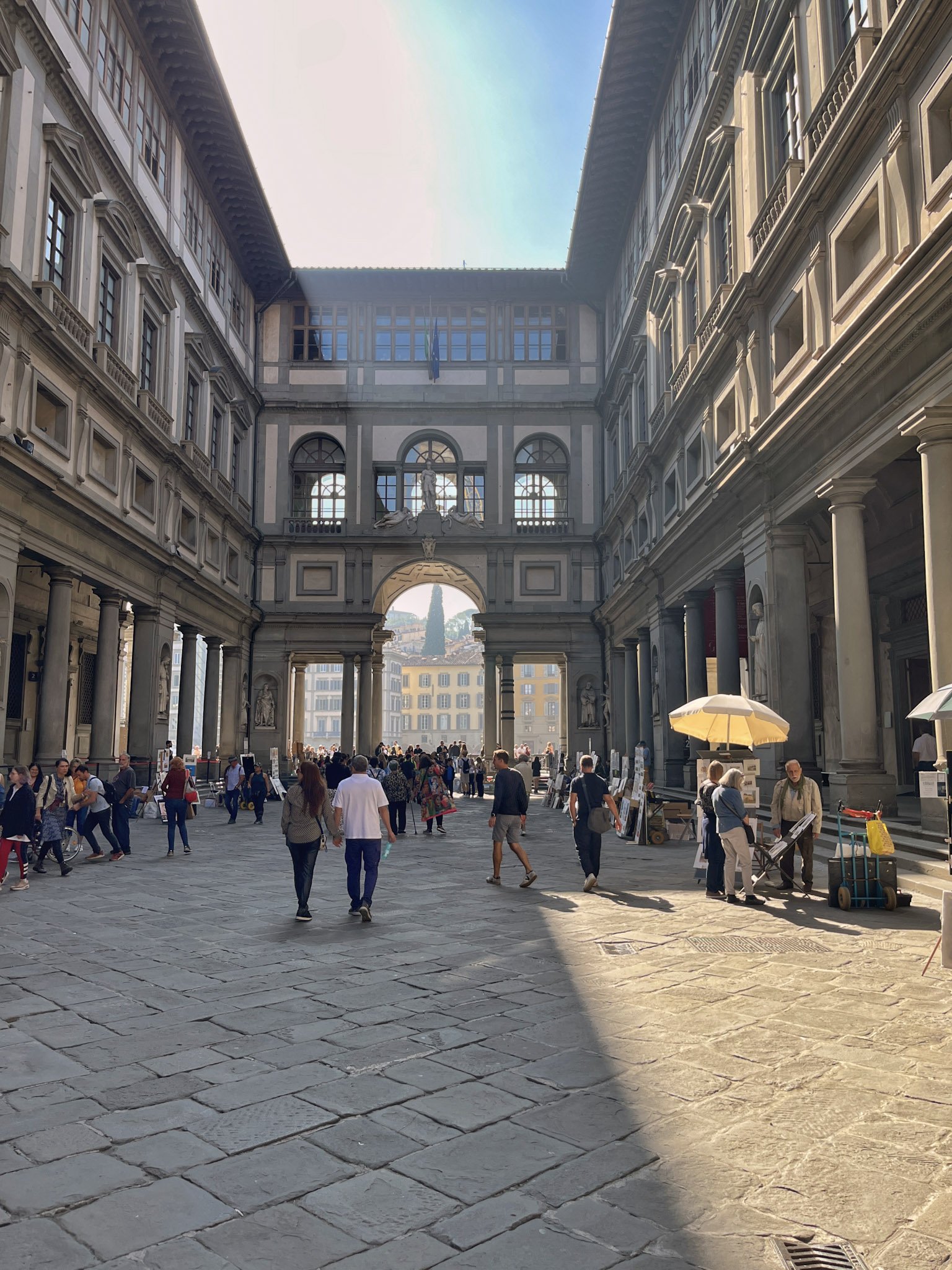
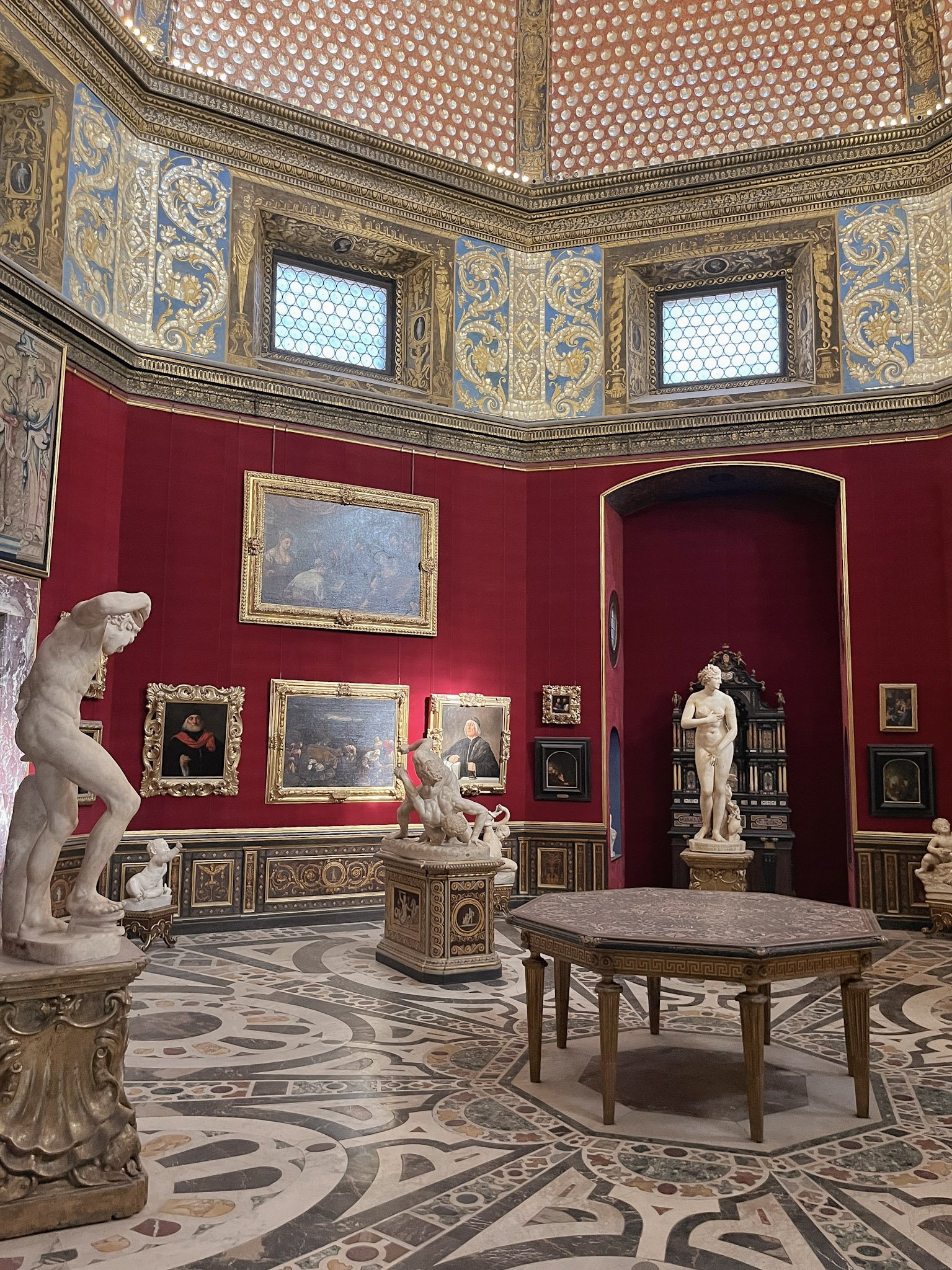
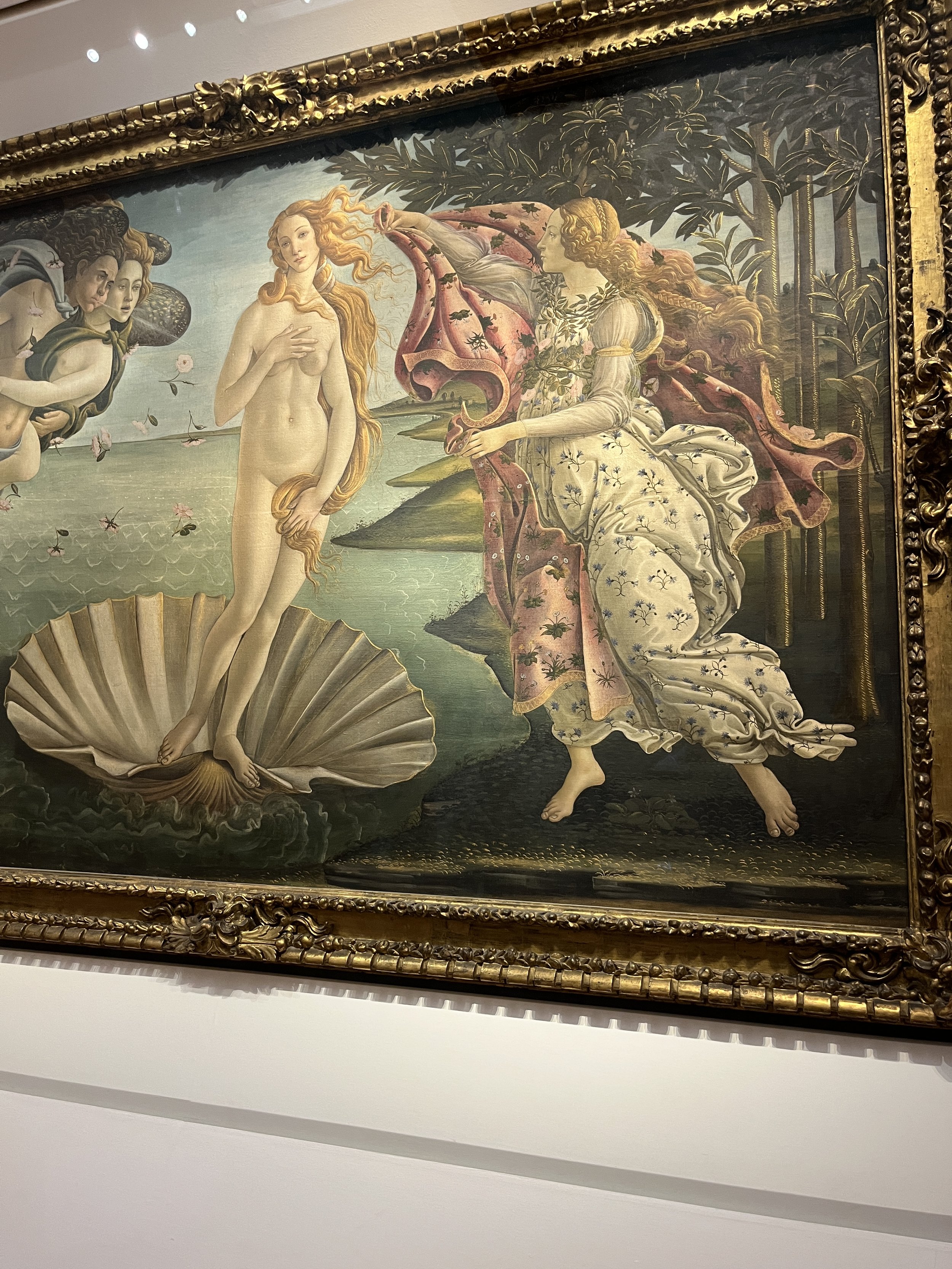
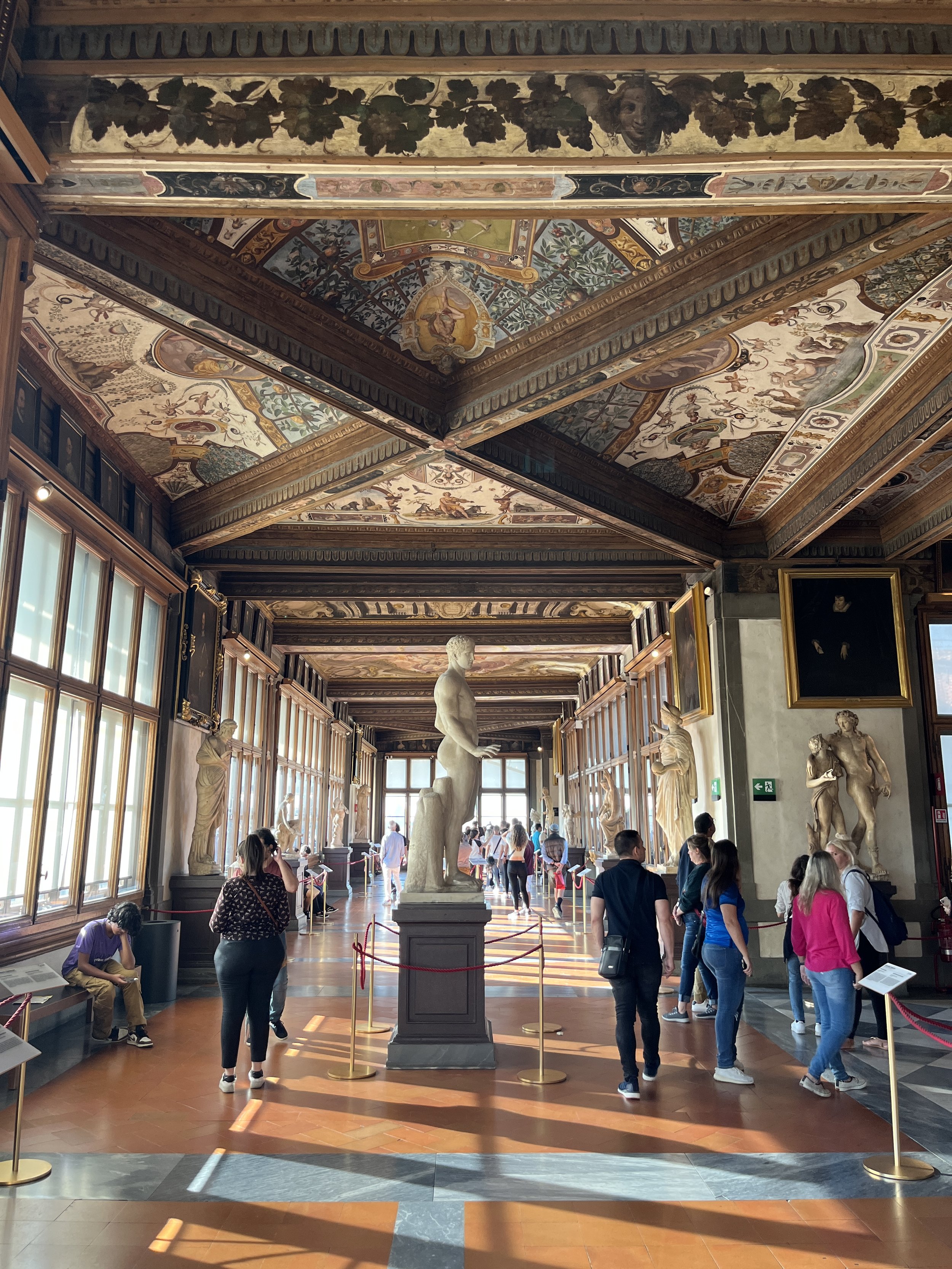
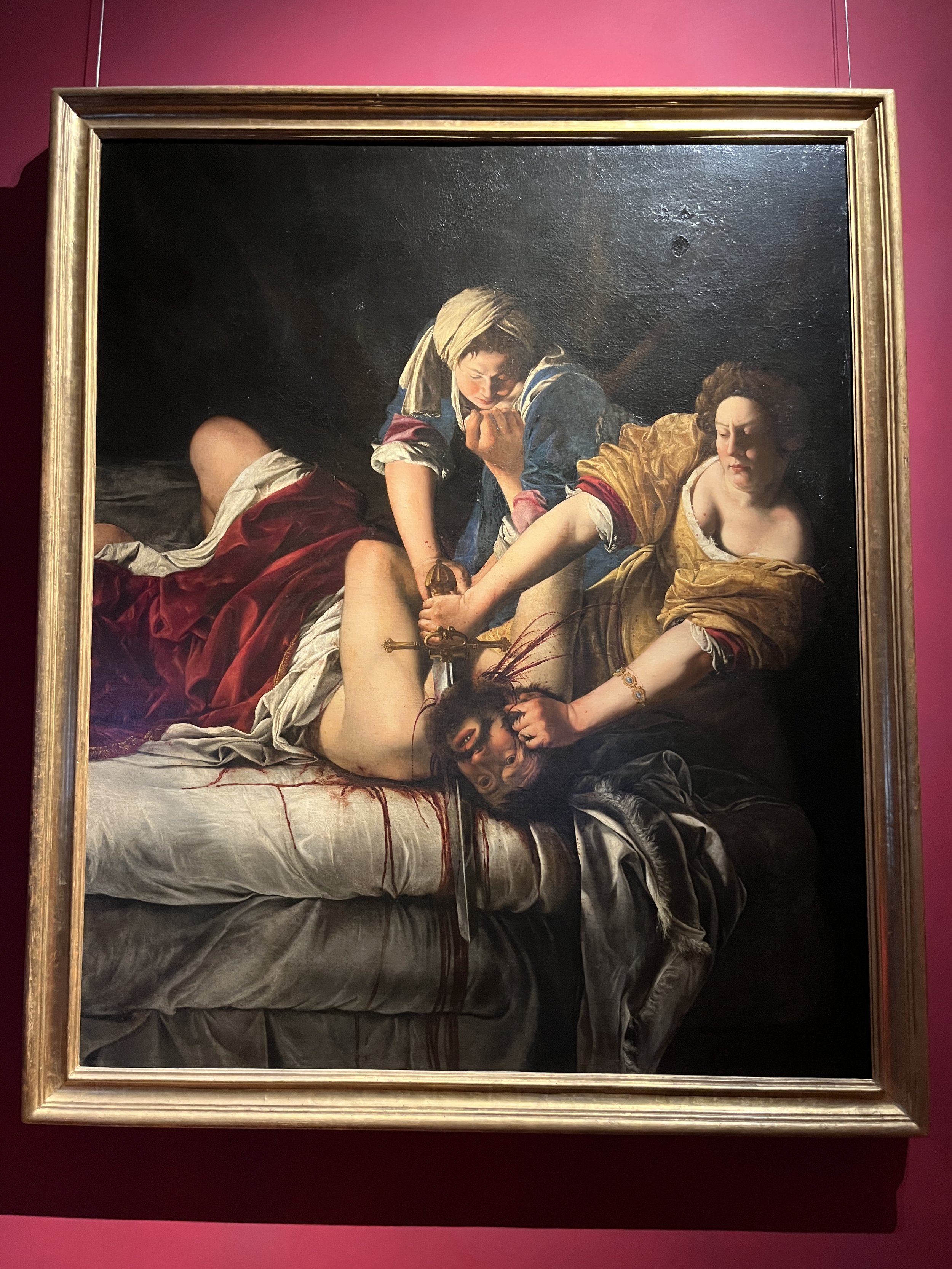

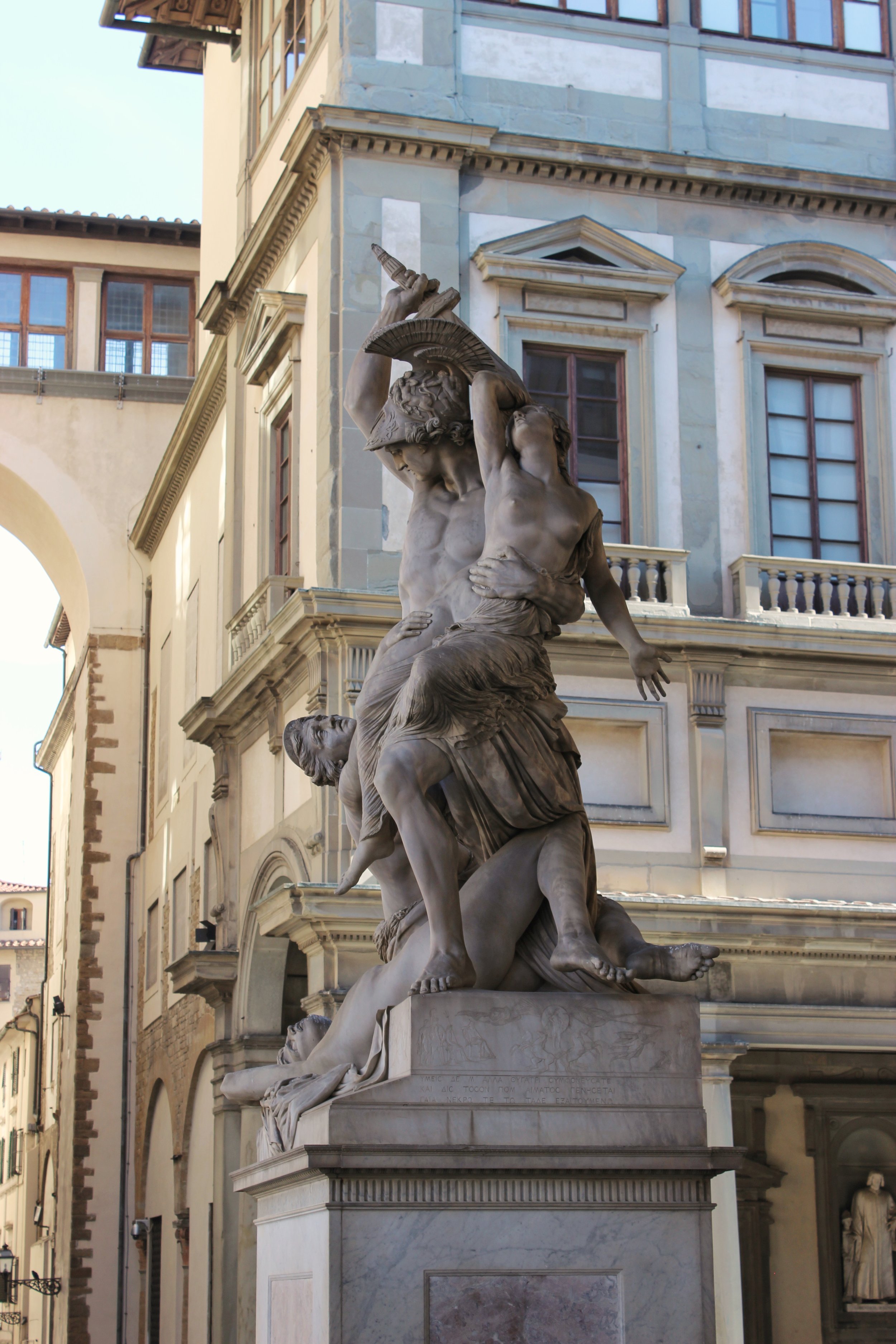
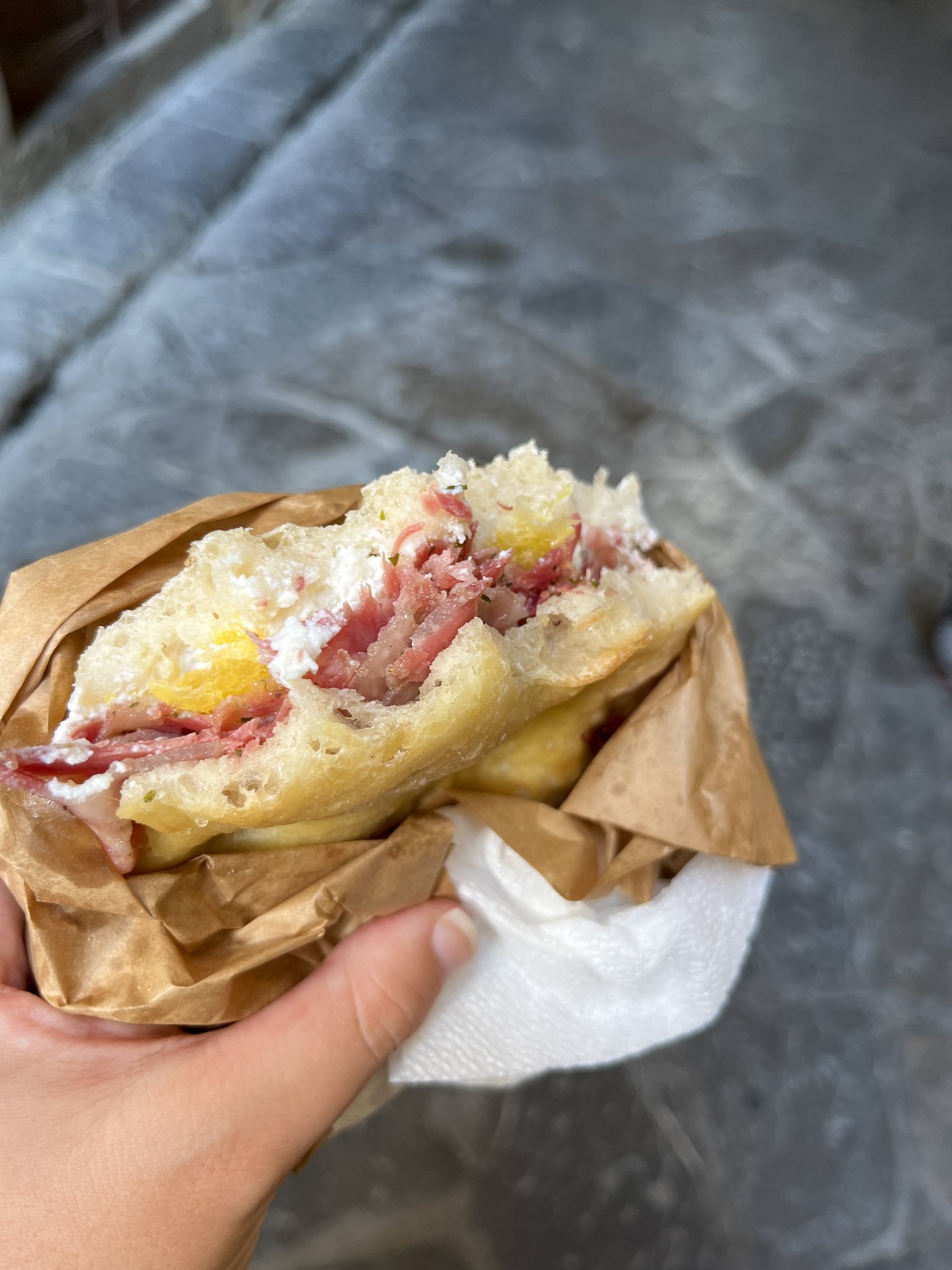
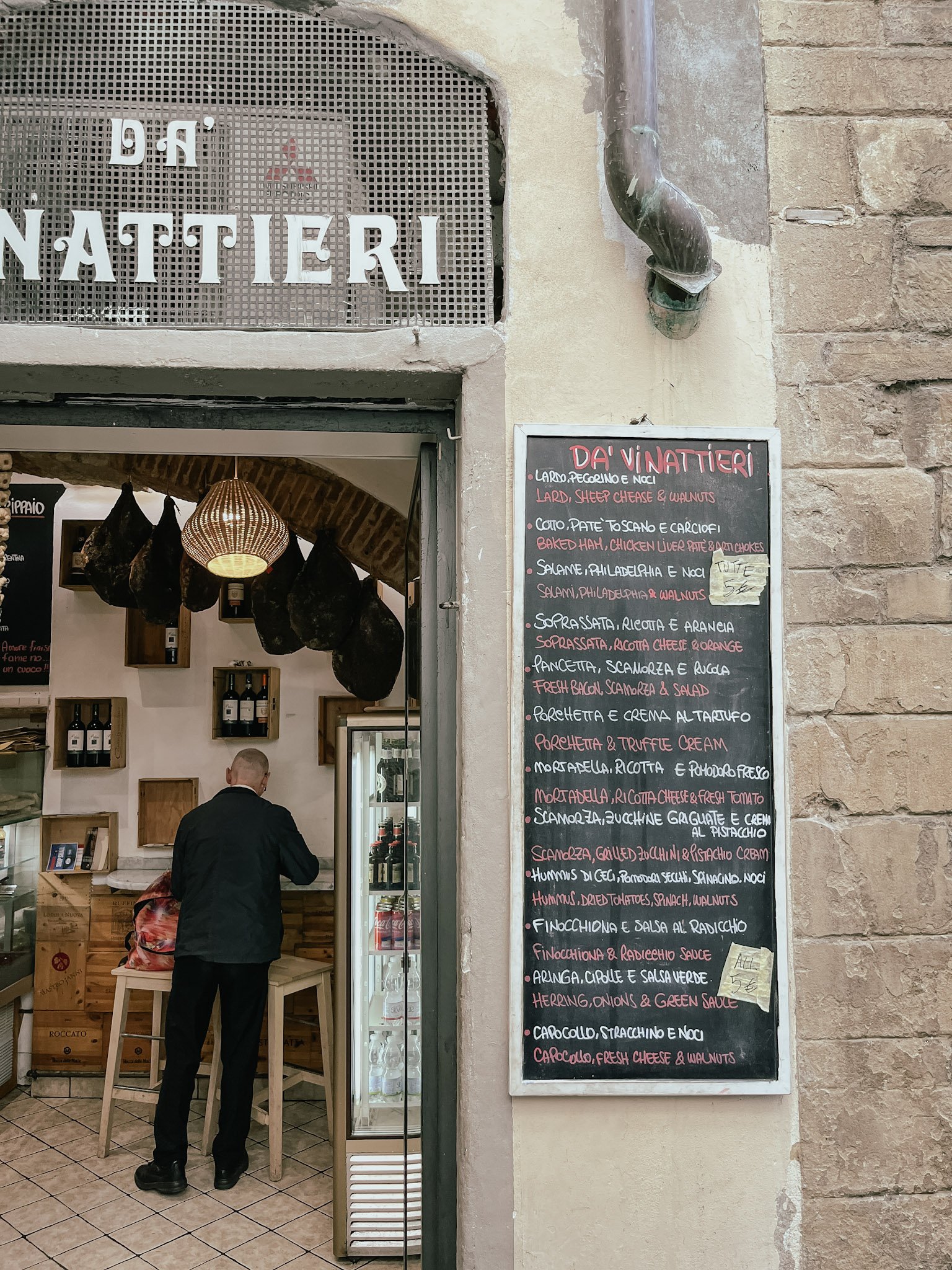



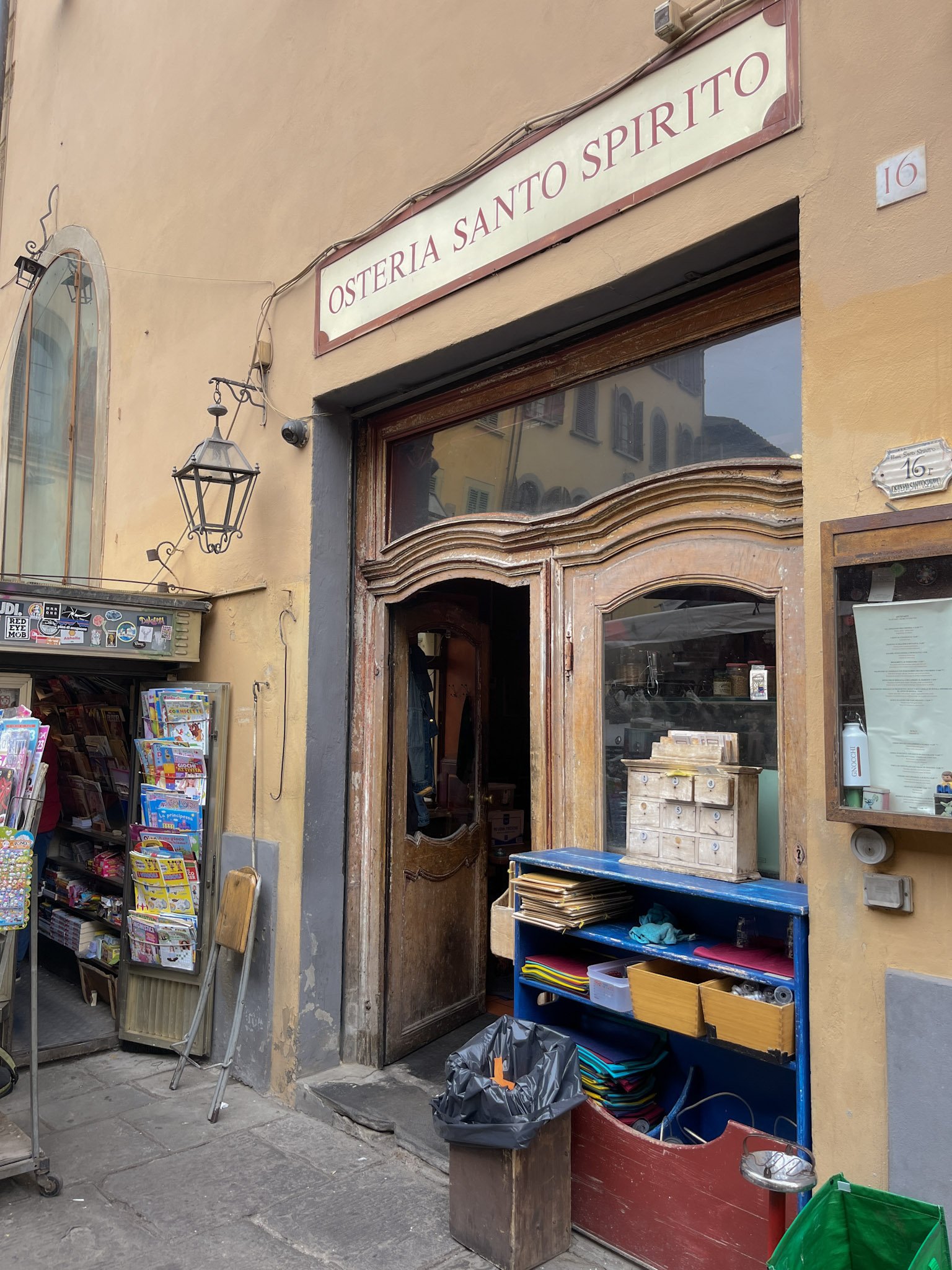


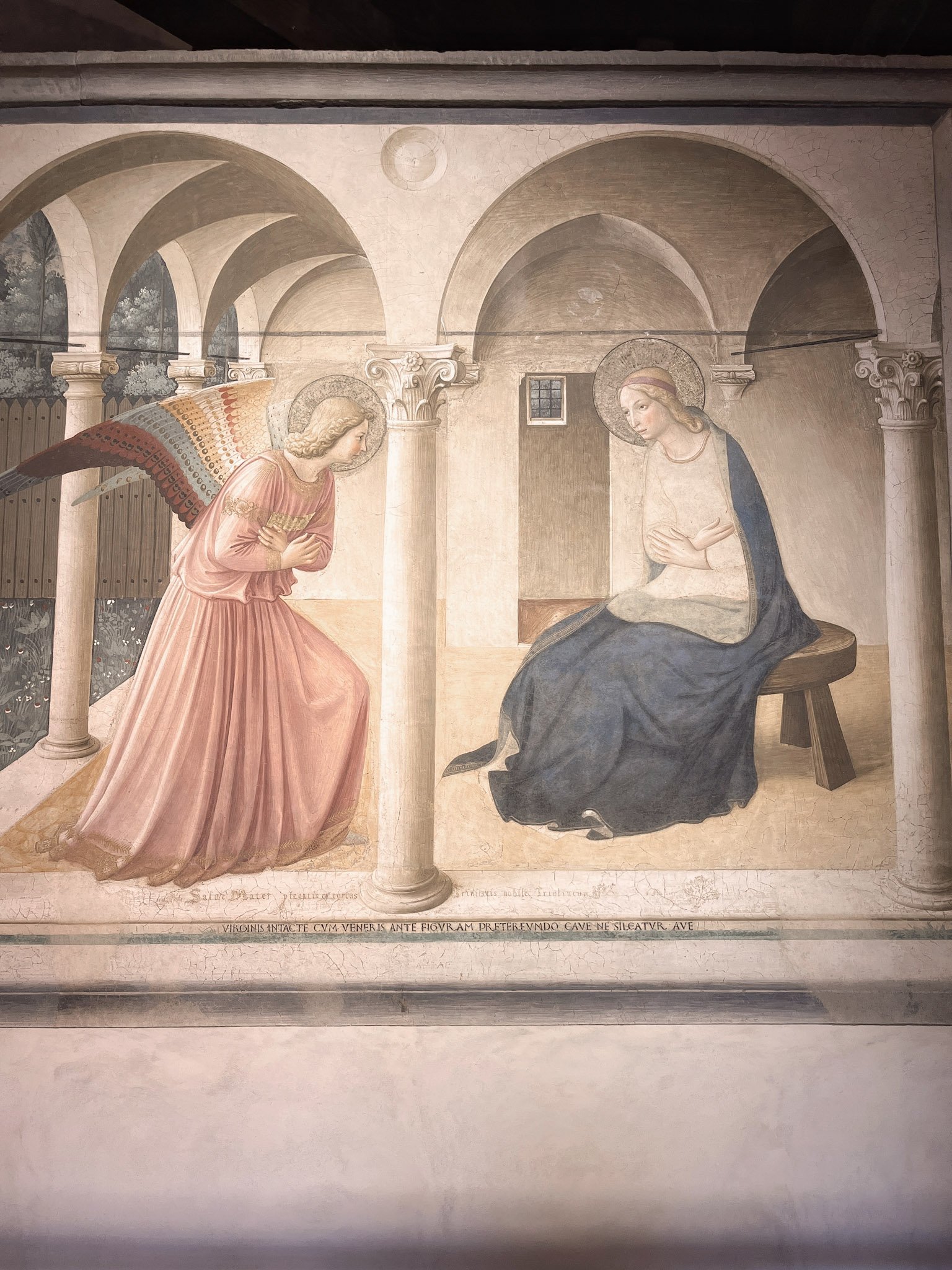
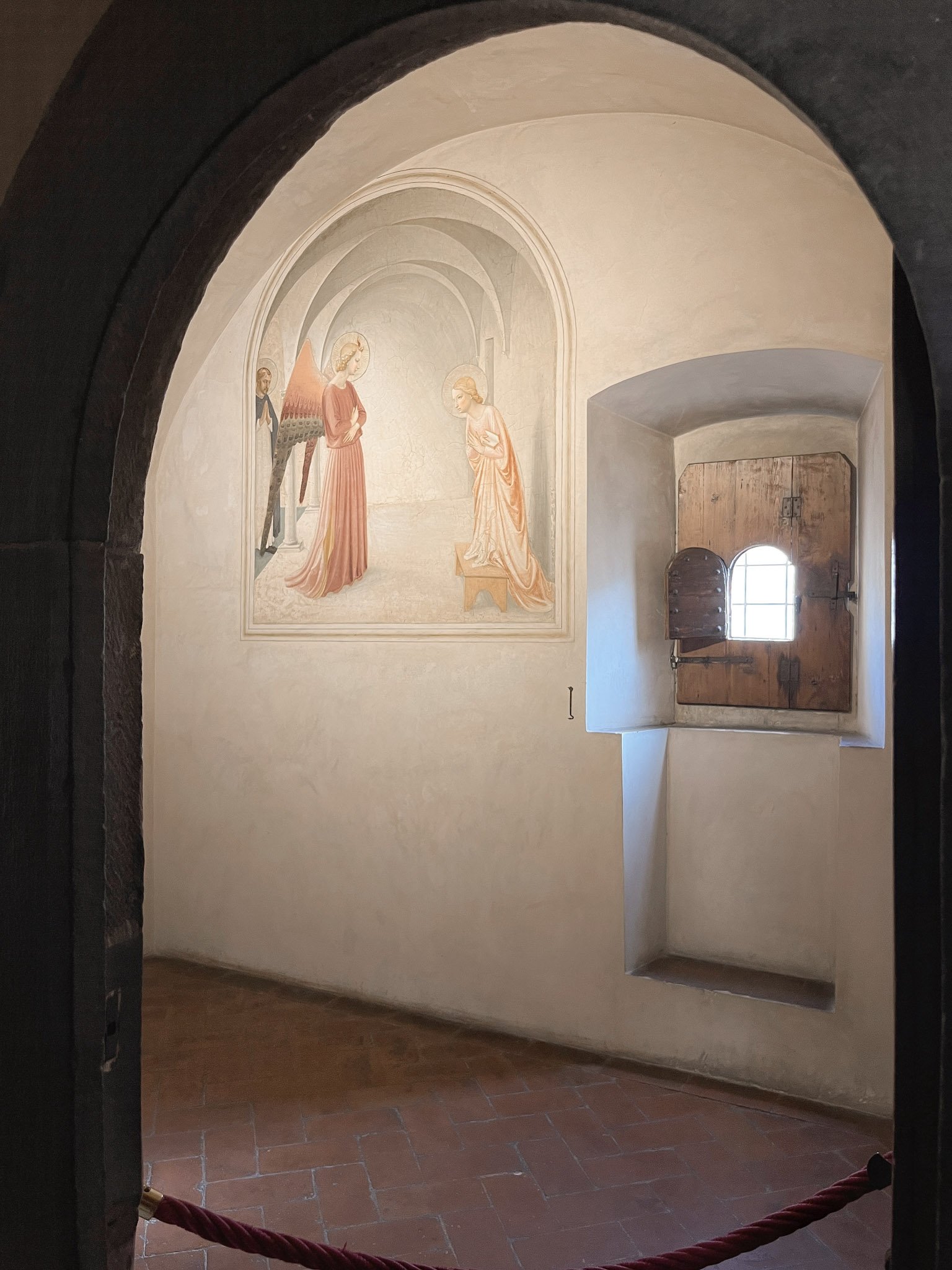
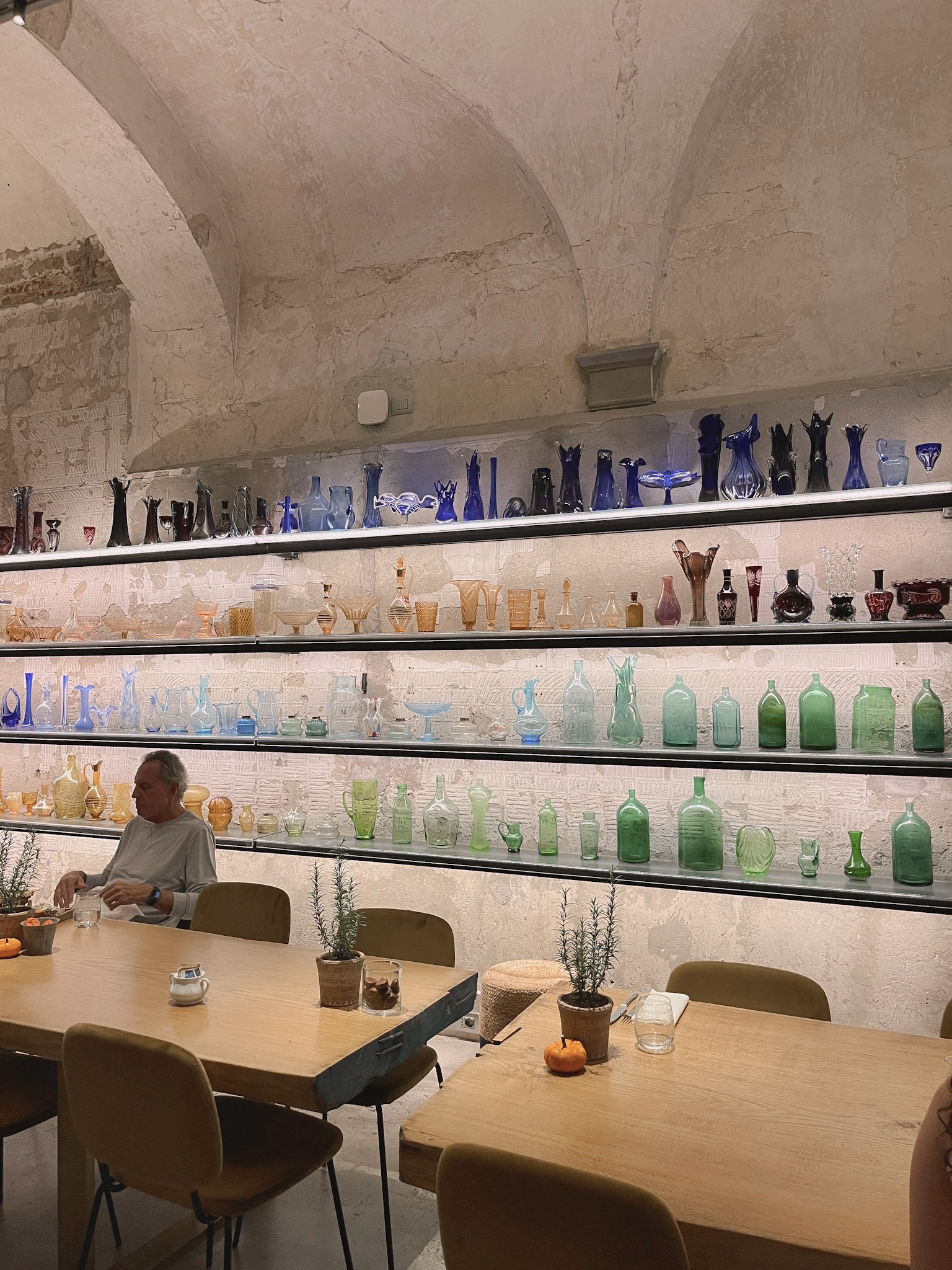
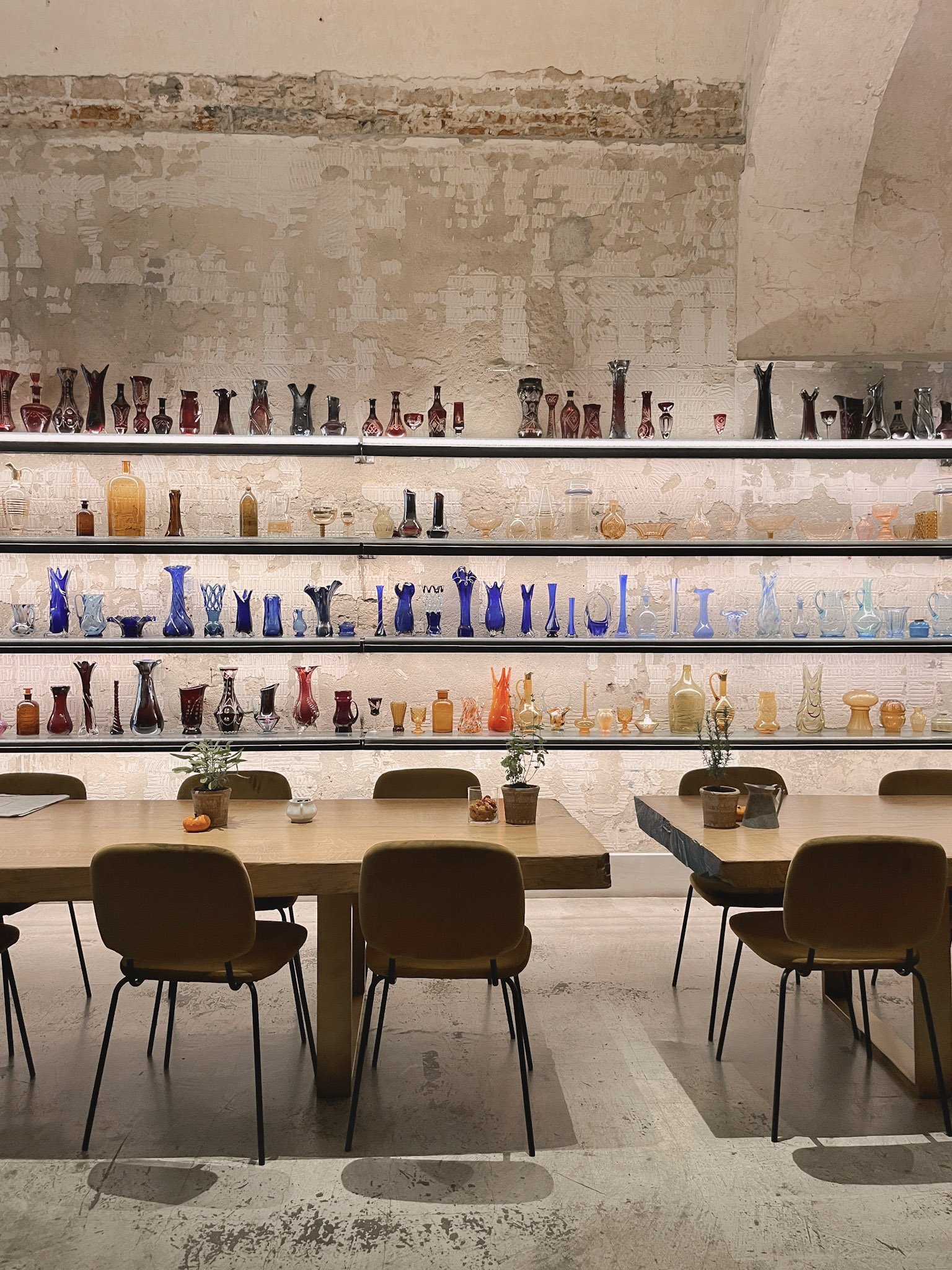
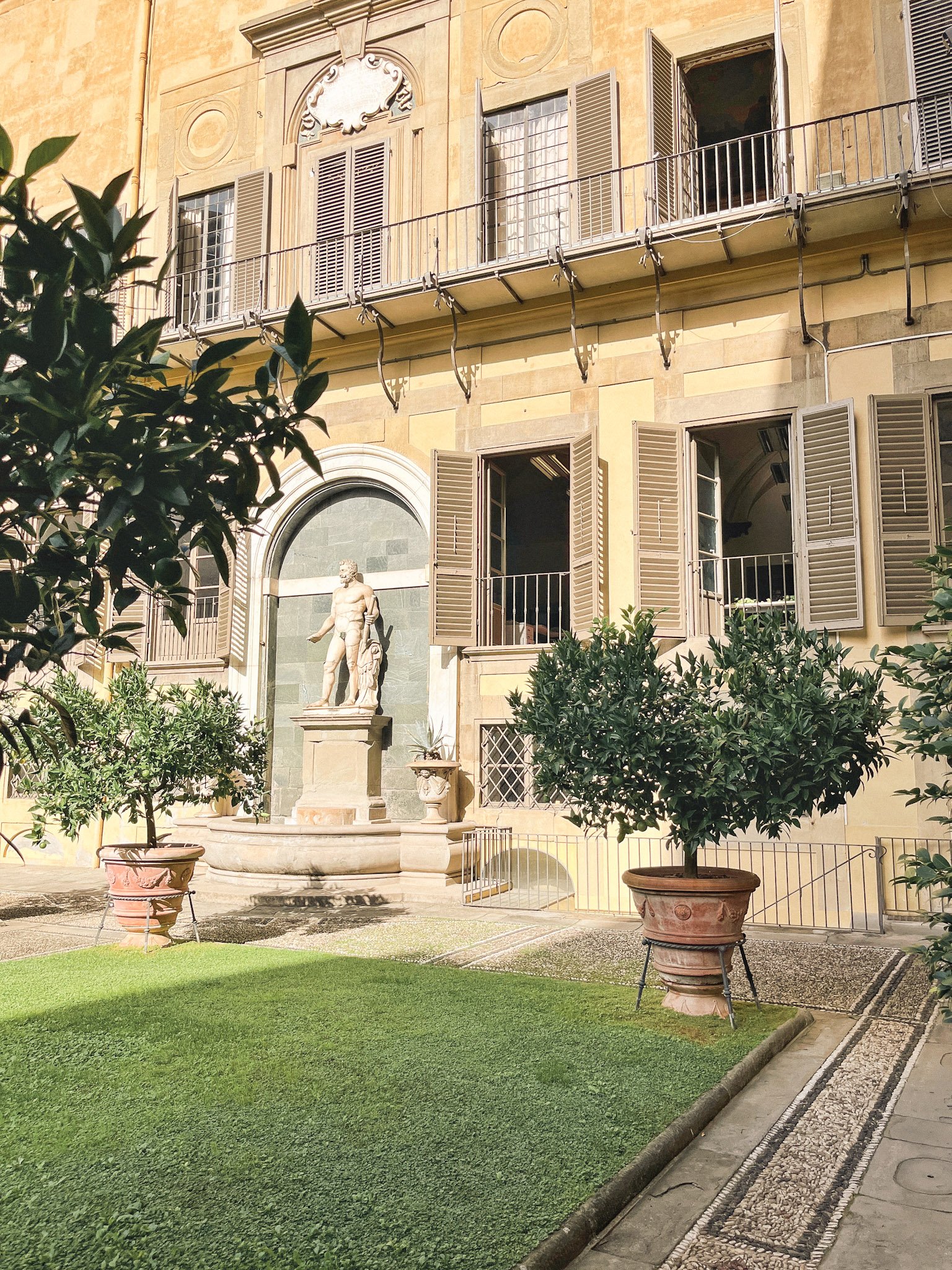
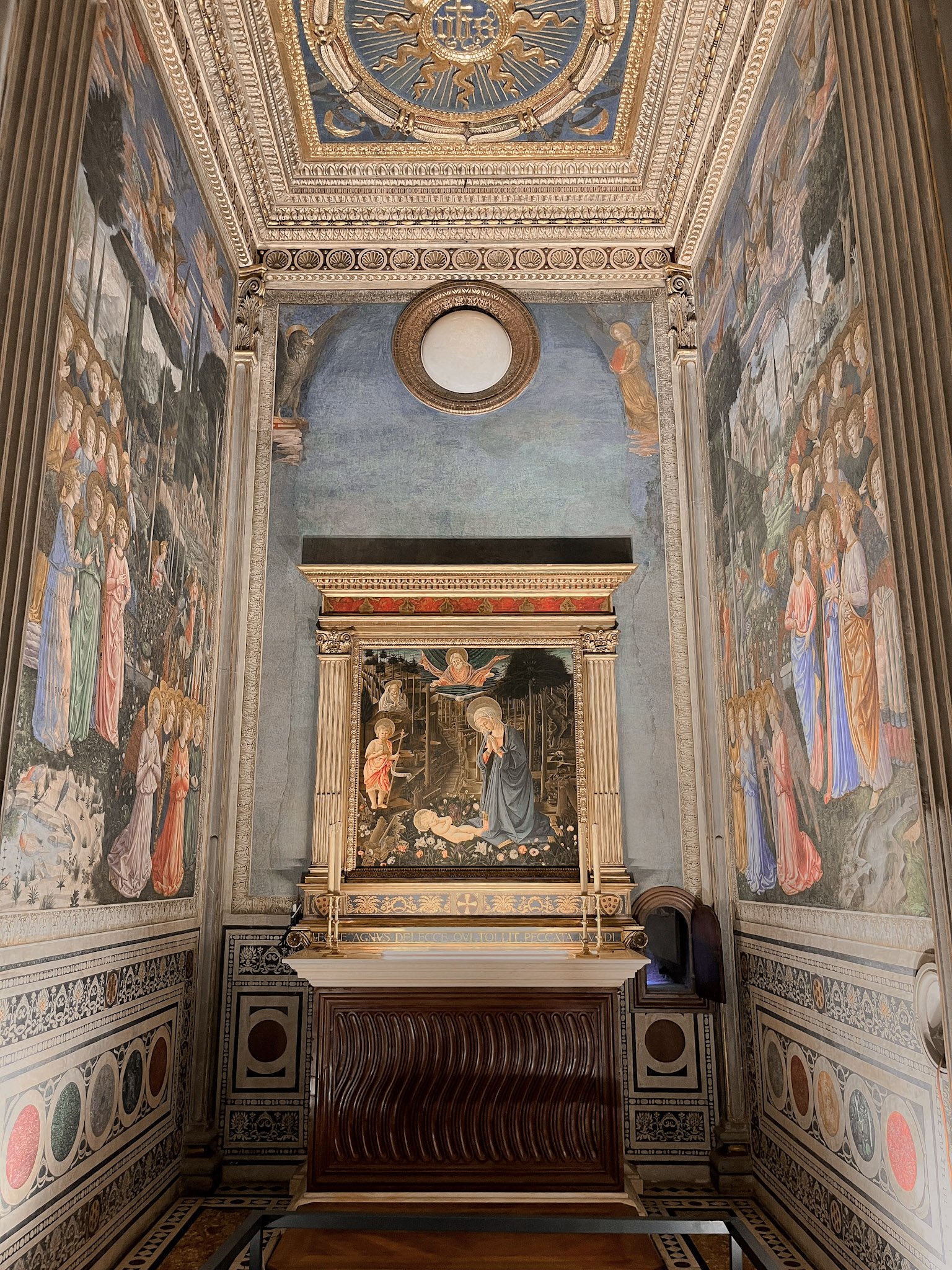
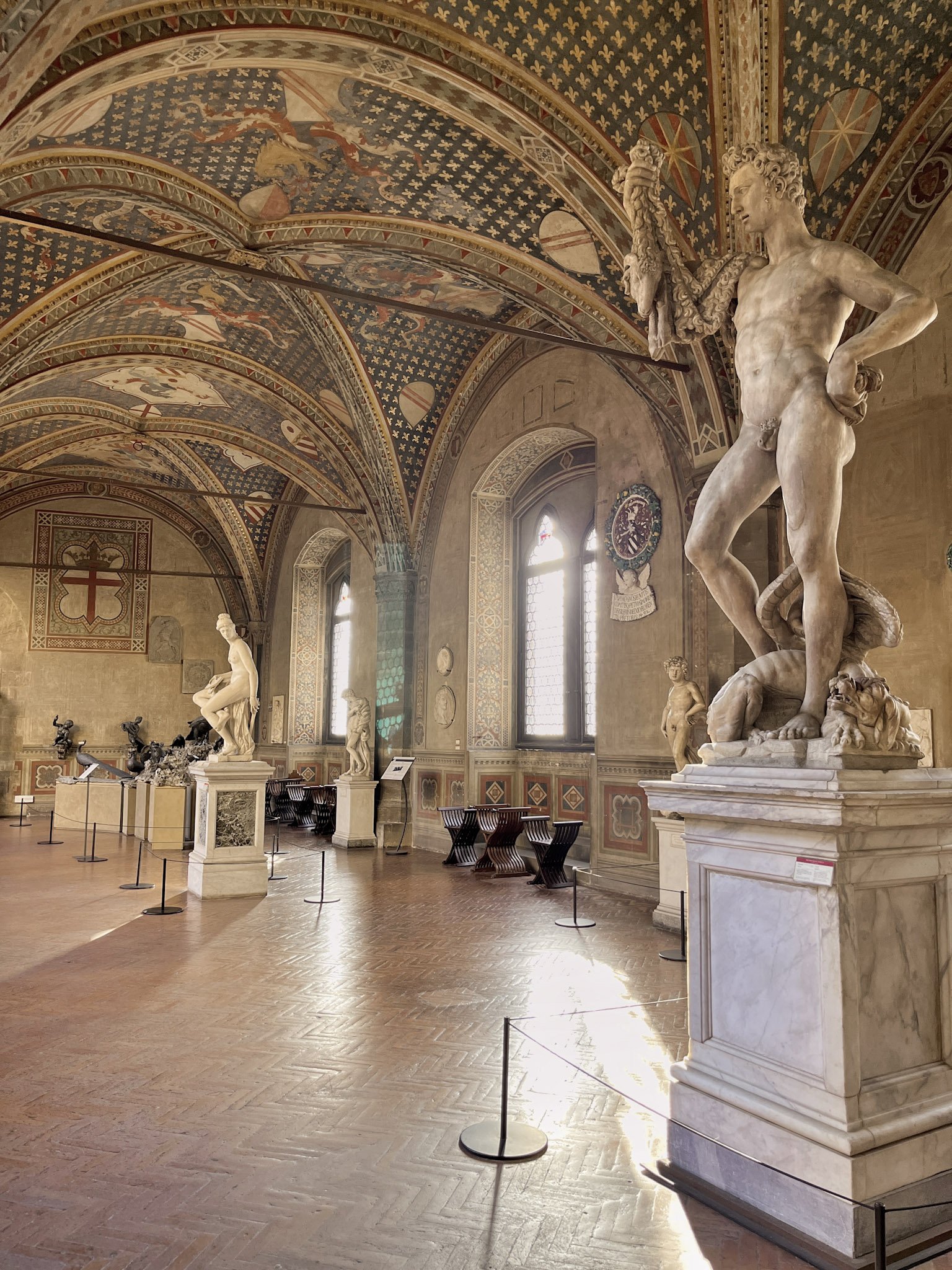
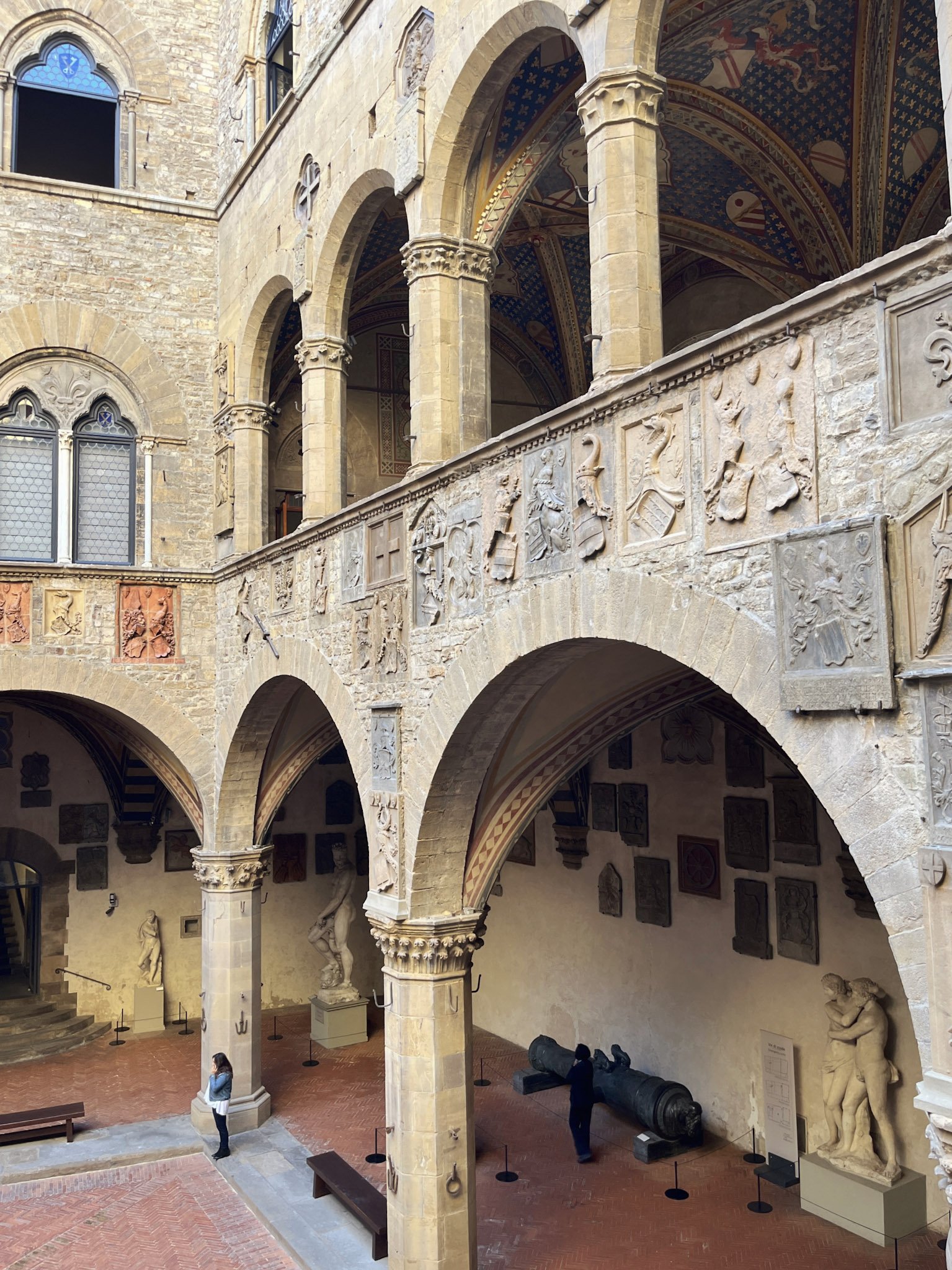
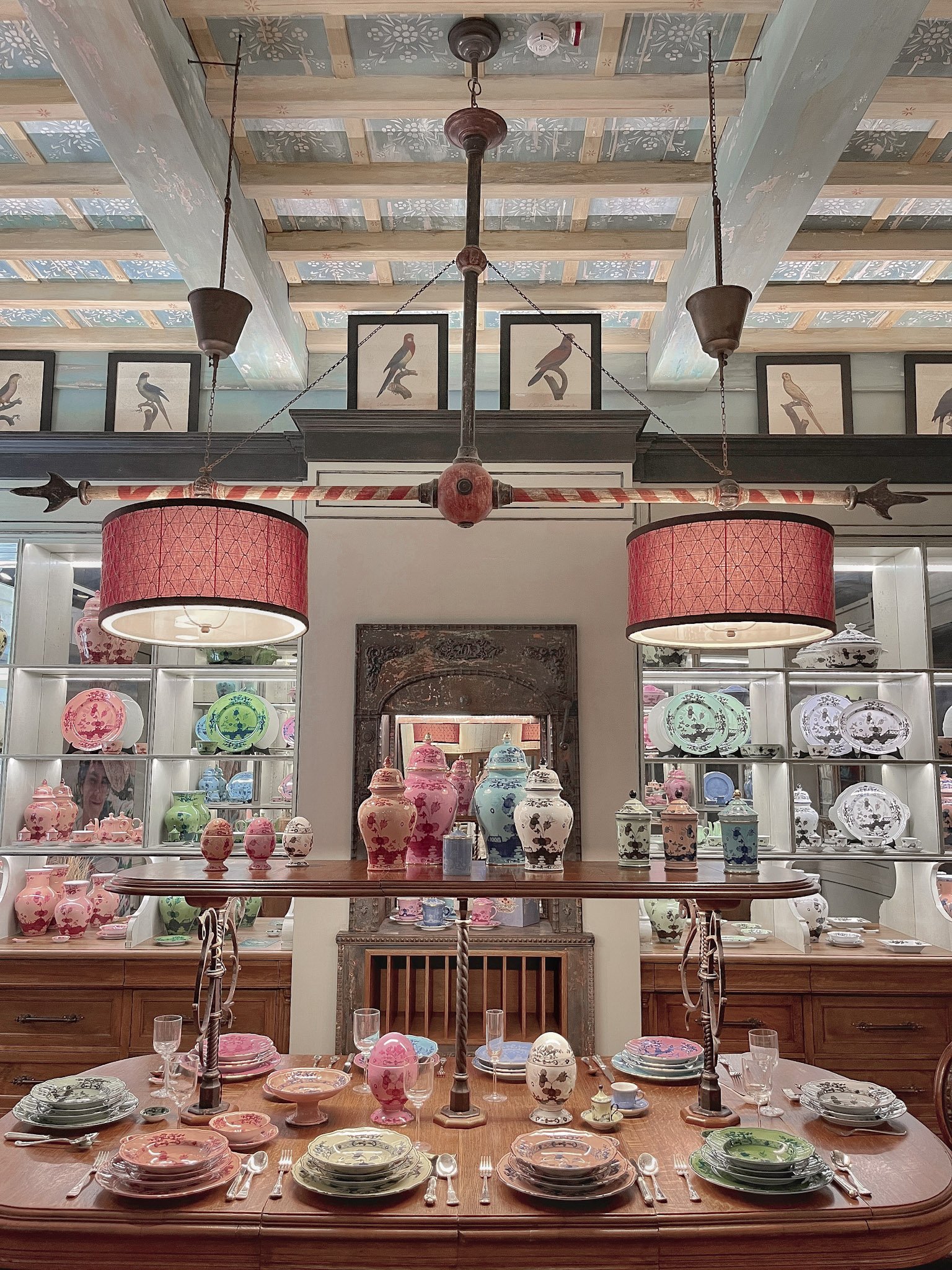
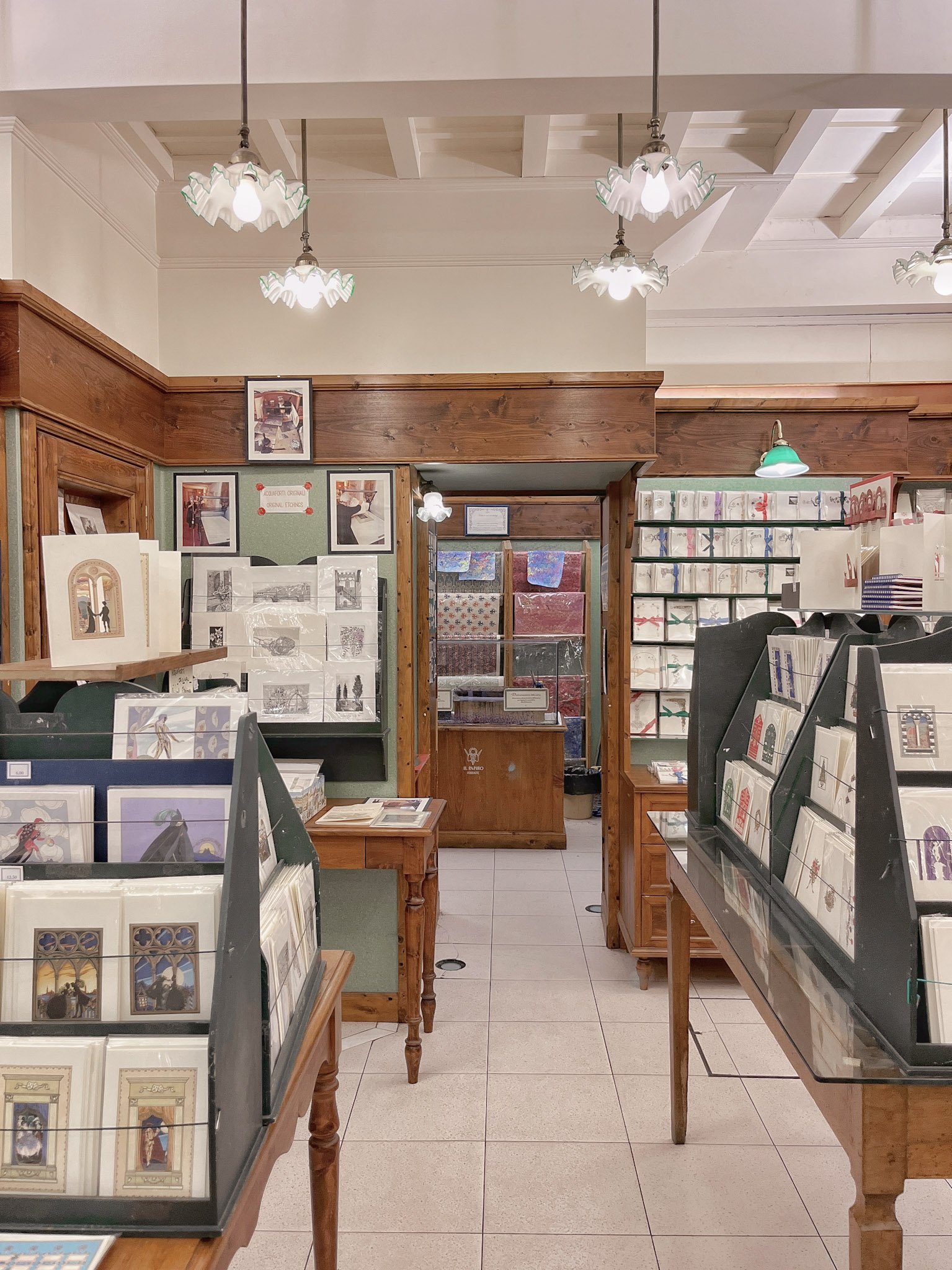

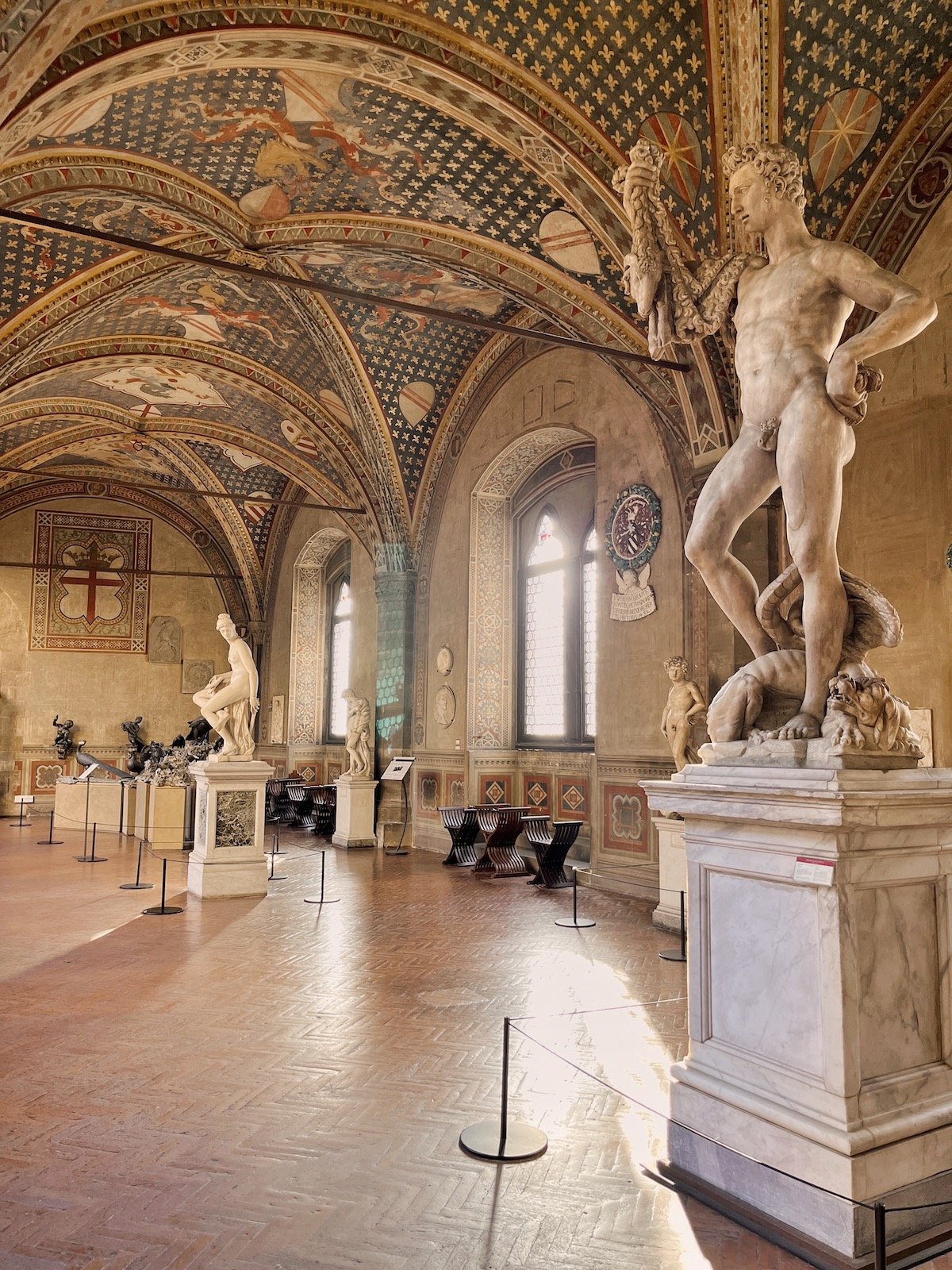
Florence is one of the most incredible cities in the world. It’s steeped in history and is almost otherworldly in its beauty. There is so much to do in Florence, especially in regards to art history. But how can you distill it all down to one day? Here’s my guide to spending 24 hours in Florence.